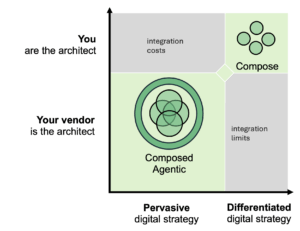Navigate The DXP Revolution For Impact With The Executive Guide To DXP, 2025
We’re seeing some wildly exciting things happening with digital experience platforms (DXPs) that present both opportunities and significant challenges for modern enterprises. They are becoming the backbone of how we connect with customers. To harness these exciting possibilities, technology and business leaders must move beyond just knowing about the trends and instead translate and mold them into concrete business realities.
Real-world wins require a strategic shift, focusing not just on the technological capabilities of DXPs, but on their direct impact on customer engagement, operational efficiency, and ultimately growth. Understanding how to bridge this gap between emerging DXP trends and tangible business outcomes is the new direction for driving competitive advantage and ensuring sustainable success in today’s AI economy and digital-first focus. Many leaders are experiencing the sense of urgency around these core principles:
- Stop chasing shiny objects; start pursuing business outcomes. It’s easy to focus on the “what” before the “why.” Years ago, focusing on the cool new tech was a valid strategy. Early adoption was a differentiator in a “first-to-have” world. The game has changed, and now the advantage lies in how you use the tech to deliver superior customer experiences and achieve specific business goals. A DXP isn’t just a tech investment — it’s a business transformation engine. Tech execs must lead with a clear vision that aligns digital experience initiatives with measurable business goals like customer acquisition, retention, and revenue growth. Your success hinges on cross-functional alignment, governance, and continuous value delivery.
- Think composable LEGO bricks for growth. Imagine your entire digital experience as a giant LEGO set. Composable DXPs let you add what you need when you need it — from a vendor with a vision. You get to pick and choose the best “bricks” that deliver against your strategic objectives — a top-tier content management system here, a killer personalization engine there, a robust e-commerce module from a different vendor. This isn’t random mixing and matching; it’s about scalable innovation. Whether modernizing legacy systems or launching new experiences, modular architectures and cloud-native tools enable faster innovation, better integration, and lower risk. Start small, scale smart, and evolve with your customers.
- Let AI be your force of gravity. AI is the core and not the add-on. Prioritize DXP platforms that treat AI as a core capability. AI guides practitioners through the vast maze of features that they need to meticulously configure for personalization that doesn’t alienate customers. In recent years, vendors of full-featured DXPs have released their cloud-native composable platforms. Vendors possess a unique ability to use agents to harmonize their own DXPs with a level of integration and coherence that is currently unattainable for enterprises managing complex, multivendor technology stacks.

The AI-infused future of DXPs
The DXP market is mirroring the evolution of other business applications — rapidly integrating AI to enhance personalization, automation, and decision-making. Vendors are embedding AI at the core of their end-to-end platforms, not just as add-ons. This shift enables smarter orchestration of customer journeys and empowers practitioners with tools that guide configuration and optimize outcomes.
Forrester clients have access to my new research: Executive Guide: Digital Experience Platforms.
If you need help rationalizing your DXP strategy, give me a call
Allow me to help make sense of the decision to go with a packaged DXP or architect your own, as well as the trade-offs of each option. Together, we can create your plan for how to drive the selection of your digital experience providers that aligns with your strategic commitment to continuously improving business results through technology.
Schedule an inquiry with me to talk about how modern digital experience technology can help you deliver your digital strategy.
